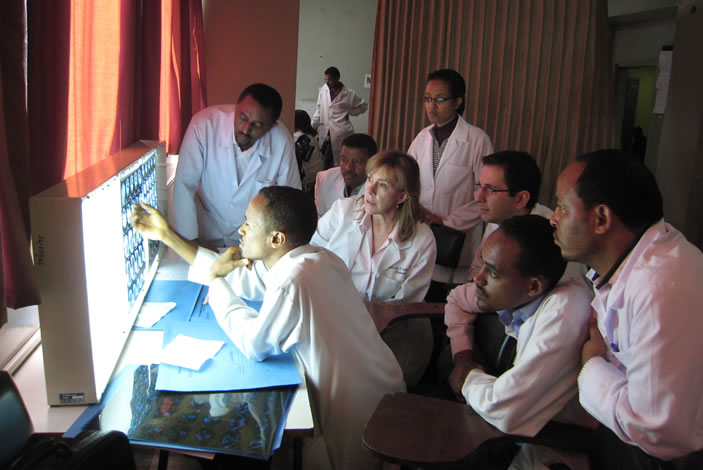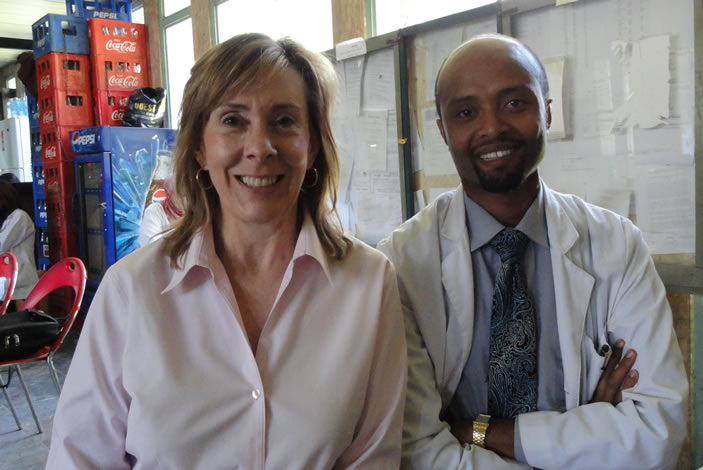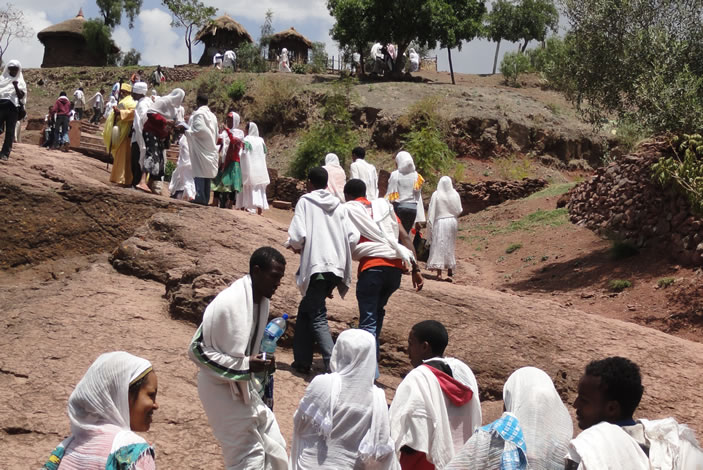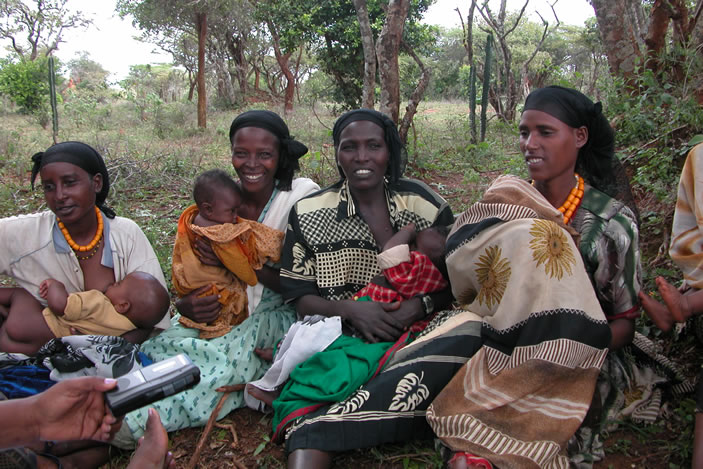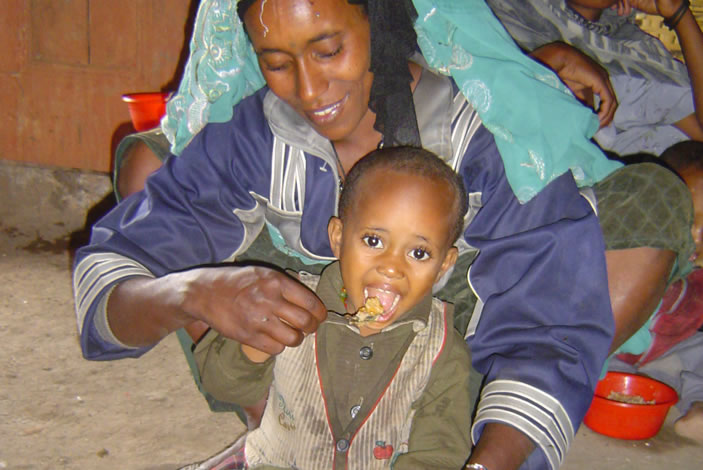The gaunt teenage boy lay on the cot, his dark eyes registering only mild interest when the medical team parted the red and white candy-striped curtain that separated him from the other patients and approached.
Patricia Hudgins, an Emory radiologist, Dominique Cosco, an Emory general practitioner, and three Emory residents greeted the boy and his father, who stood next to the bed clutching a soiled bag containing his son's medications and a much-folded, stained X-ray.
When the clinicians held the rumpled film up to a window, they saw a massively enlarged heart. This, along with the boy's shortness of breath and distinctive heart murmur, confirmed the diagnosis of rheumatic heart disease and symptomatic heart failure. Back at Emory, the teen would have been scheduled for a heart valve replacement. But they were not at Emory. They were in the sparse emergency room of Black Lion Hospital in Addis Ababa, Ethiopia. Here, the best they could do was recommend that his symptoms be managed medically in the hospital, realizing that he would likely have to remain on his ER cot for several days before a hospital bed became available.
Welcome to medicine in Ethiopia, where there is one qualified doctor for every 35,000 people and where the advanced life-saving equipment and technology that are the stock and trade of U.S. health care are either very rare or nonexistent.
"The practice of medicine here is marked by lack—lack of human resources, lack of physical resources," says Hudgins. "Yet the health care practitioners here are amazing in how much they are able to do with so little."
A growing contingent
Hudgins and Cosco are part of Emory medical school's rapidly growing involvement in Ethiopia, aimed at helping address that dearth. The lion's share of Emory's Ethiopian efforts center on a medical education exchange program funded by a U.S. government grant to the country's largest medical school, Addis Ababa University (AAU). Emory also has received funds from the Bill & Melinda Gates Foundation for a project involving maternal and child health. And the dean of the School of Medicine has pledged more support through the Emory Global Health Residency Scholars Program.
"There are more Ethiopian doctors practicing in the United States than in Ethiopia," says Henry Blumberg, an Emory infectious disease specialist and epidemiologist. "Physician shortage is a huge problem there, along with challenges in medical education and training, all problems that Emory is helping to address. We don't want to be involved in medical tourism. Our goal is to make a difference."
The medical school's ramped-up efforts in Ethiopia began about two years ago. In January 2010, Emory was awarded an open-ended grant through the Bill & Melinda Gates Foundation to "…do something related to maternal and child health," says Blumberg. "So we went to Ethiopia with money but no project. Our colleagues at AAU decided they wanted to put the funds toward making magnesium sulfate available to pregnant women for the treatment of pre-eclampsia and eclampsia."
Pre-eclampsia is routinely treated in the United States and throughout the world with magnesium sulfate, "a pretty old and very cheap drug," says Blumberg. For reasons that are not clear but likely related to profitability, there are no manufacturers or importers of the drug in Ethiopia. As a result, pre-eclampsia and eclampsia are the number two causes of maternal mortality in Ethiopia, behind hemorrhage.
Upon learning of AAU's desired focus, Blumberg, an infectious disease specialist, recruited the aid of Jennifer Goedken, an Emory gynecologist. Goedken, Blumberg, and their team developed a standardized protocol for the drug's use and created teaching materials in the form of posters and pocket cards. The original plan called for introducing magnesium sulfate use in Addis Ababa University's three teaching hospitals (Black Lion, St. Paul's, and Gandhi), but the AAU-Emory team also arranged partnerships with the Ethiopian Ministry of Health, the Ethiopian Society of Obstetricians & Gynecologists, and UNICEF. The influence of that partnership resulted in magnesium sulfate use being implemented in 107 public hospitals throughout the country.
This accomplishment, while laudable, pales when you consider that nearly 90% of the births in Ethiopia occur in the home. "The next step is to find a way to take magnesium sulfate beyond the hospital and into the community," says Goedken. "We've put together a proposal for a pilot project to train community health workers to diagnose pre-eclampsia so they can refer patients to health centers. Emory already has a Gates grant through the nursing school to create a community-oriented strategy to improve maternal and newborn health in rural Ethiopia. We would like to add education about diagnosis and treatment of pre-eclampsia to what they are already doing."
Separately in 2010, the National Institutes of Health unveiled a new initiative to strengthen medical education in sub-Saharan Africa. AAU garnered one of the five-year $10 million grants and chose to partner with Emory, along with three other U.S. universities. AAU is looking to Emory to help it meet two recent government mandates, increase the number of medical students and doctors trained each year and increase the number of subspecialties in which graduates can train. AAU's medical classes jumped from 100 to 300, though its faculty count remained the same, and no faculty are trained in many of the subspecialties that are being planned.

